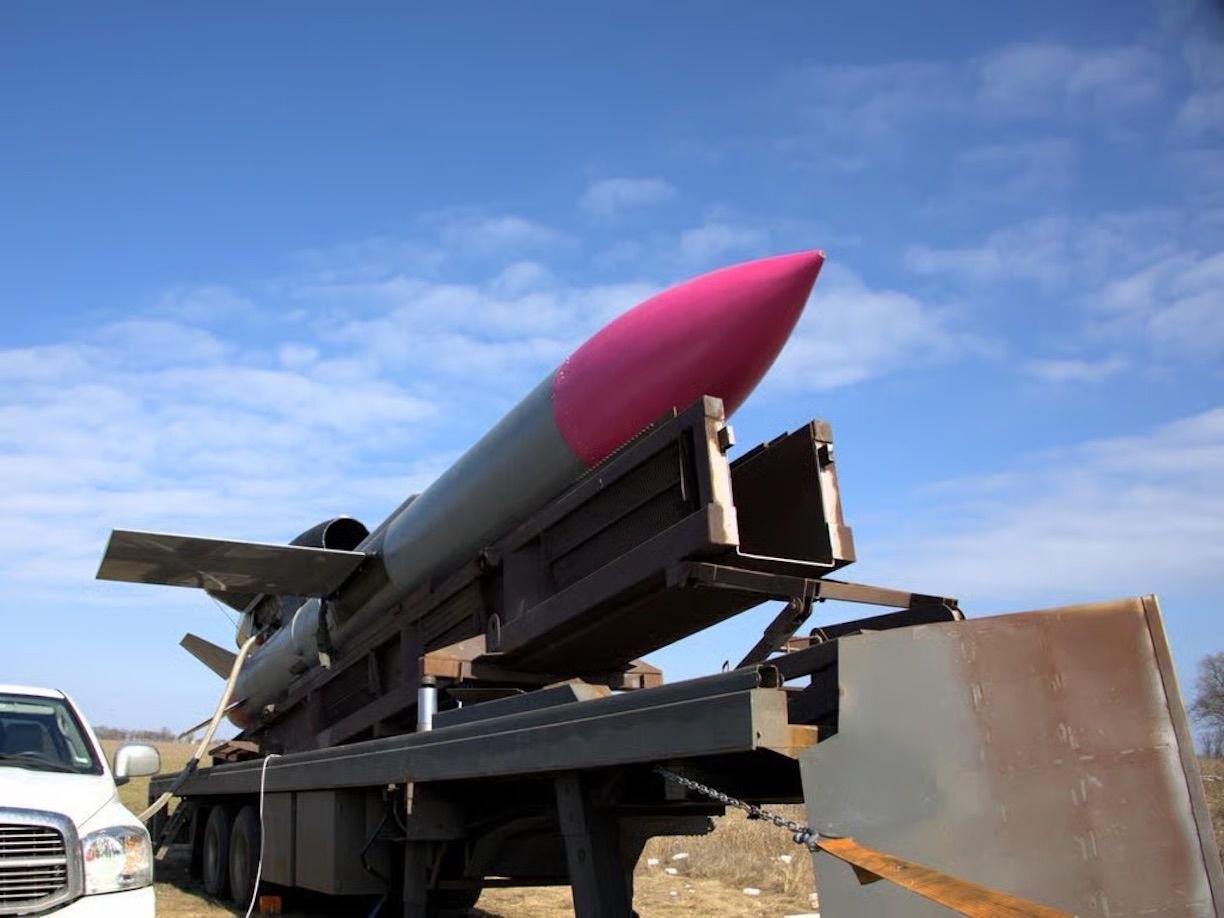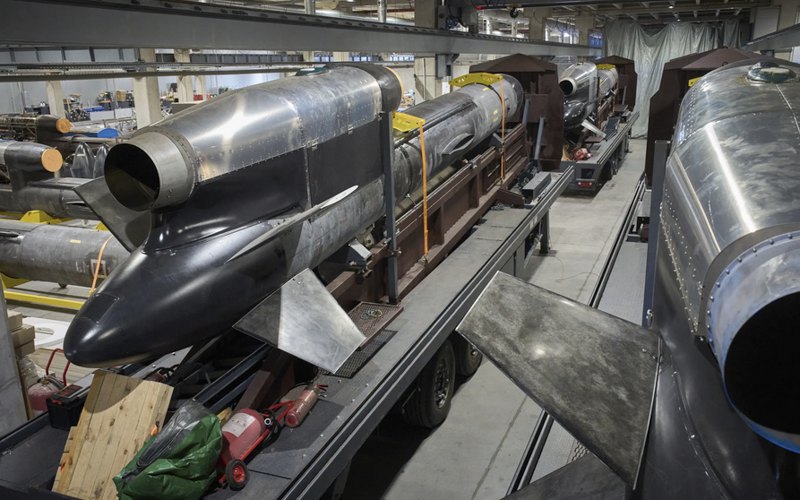
The FAB-500 is designed to damage and penetrate reinforced concrete structures and brickwork within a radius of 40–45 metres. Therefore, the tonnage of the warhead (explosive + fragmentation elements) is more than sufficient.
The cheapest solutions: an inertial guidance system brings the Flamingo to the target area, and GPS places it within a 20-metre circle.
Can it be jammed with electronic warfare?
Firstly, electronic warfare is not available everywhere, and secondly, the same French HAMMER planning drones somehow hit the line of combat contact, and quite accurately — so, at present, Western technology in electronics allows Moscow's jamming systems to be overcome.
The same long-range drones, for example, regularly fly to the airfields of the nuclear triad. I think that electronic warfare is present there, and the accuracy is sufficient to hit a fragmentary part near the aircraft — the smart system has enough information.
And if a dozen piston aircraft can reach Tatarstan (Yelabuga), if Neptune can target a fuel tank at the naval base in Novorossiysk, then a heavy cruise missile can also reach its target.

Moreover, the 3,000 km radius allows the route to be laid through the wilderness, and the echelon to bypass small air defence systems at altitude.
The wings have no ailerons; the entire system is controlled by an X-shaped tail stabiliser. This is to reduce cost and simplify assembly, as well as to facilitate the transport of the six-metre wings.
In one video, there are seven products in the workshop at the same time — that's a lot.
Plus, there are numbers 460 and 480 written in chalk on the parts — even if these are parts of components, that's still quite a lot.
Inviting journalists to film the rockets seems, of course, like an undisguised advertising campaign by a manufacturer who wants orders.
Because the production of even one winged rocket per day requires tonnes of explosives, imported electronic components, and the production of solid fuel accelerators and jet engine fuel.
Even if we use conventional engines from the L-39 Albatros and electronics from the civilian market, there is too much that is unavailable to a private company.
Simply put, I cannot imagine how all this could be organised in our country without the assistance of the relevant authorities.
For example, the warhead is very similar to the FAB-500 M62 in terms of assembly and is likely reinforced with additional explosives and damage elements. It was definitely not purchased on OLX. And so it is with everything.

So they showed what they wanted to show. I am sure that there is no assembly plant.
It is manufactured, like the Bohdana trailer, by a bunch of contractors, and it is not certain that they are all in Ukraine. The electronics are also imported somehow. If Iran can do it under sanctions, why can't we?
And then they assemble a kind of construction set with screwdrivers at distributed sites. Finally, it ends up on the launch pad.
The site itself for the photo shoot is most likely just a location for PR. Because there are no machines, no lines for the production of composite skin — only screwdriver assembly.
But a pneumatic wrench and a crane can be organised in any workshop, including in EU countries. Just as they didn't get our Magura and Lyut, they won't get the Flamingo either.
A demonstration of a paired launch from embankment tables is 99% combat use; there is nothing to practise with a paired synchronous launch except breaking through air defence.
So the news is good. True, many people here, based on the published photos of the missile, have been dreaming of some kind of massive Flamingo salvo on the Kremlin. But we must be realistic.
But I am confident that with several hundred long-range drones at their peak, we will intensify our firepower on key targets.
We will map out the route with long-range drones, confirm the schedule and location of the radar station with our partners, and bypass the small air defence system at an altitude of 5,000 metres. Our strength lies not in overloading the sector, but in finding routes where there is no air defence at all.
Somewhere the target will be a pumping station, somewhere — Russian Railways repair shops, somewhere — a key substation that powers several traction units, and somewhere — a workshop with fibre optic reels.
But now it will not be 50 kg, but a tonne — strategic action in narrow areas will intensify.
Meanwhile, even with 50-kilogram warheads in Ukrainian long-range drones in the Far East, fuel consumption is 10 litres per vehicle. Therefore, it is necessary to continue and increase daily sorties.







